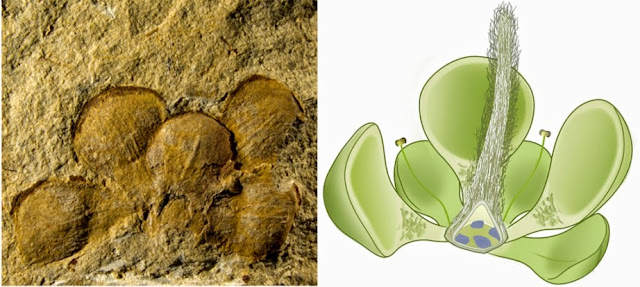
The world’s first typical flower may date back to 162 million years ago, more than 37 million years earlier than previously thought, Chinese researchers reported in a new study.
The fossil flower, named Euanthus panii, was found in western Liaoning Province, according to the study, which was published in the recent edition of the UK-based Historical Biology, an international journal of paleobiology.
The findings were made by Wang Xin, a research fellow at the Nanjing Institute of Geology and Paleobiology of the Chinese Academy of Sciences, and Liu Zhongjian, a professor at the National Orchid Conservation Center.
“Euanthus demonstrates a typical flower organization, including sepals, petals, androecium of tetrasporangiate dithecate anthers and gynoecium with enclosed ovules, implying that flowers were already in place in the Jurassic period. Since enclosed ovules, tetrasporangiate dithecate anther and flower-like organisation are all seen in Euanthus, we place Euanthus among angiosperms with decent confidence,” the researchers wrote in the study.
Wang said his colleague Liu had collected tens of thousands of fossils in the 1970s and 1980s, including Euanthus, but relevant research did not begin until 2013, yangtse.com reported on Tuesday.
According to Wang, Euanthus is very small, only about 1 square centimeter, and may have relied on wind for pollination since there were no bees 162 million years ago. (ECNS)
Note : The above story is based on materials provided by Chinese Academy of Sciences.










